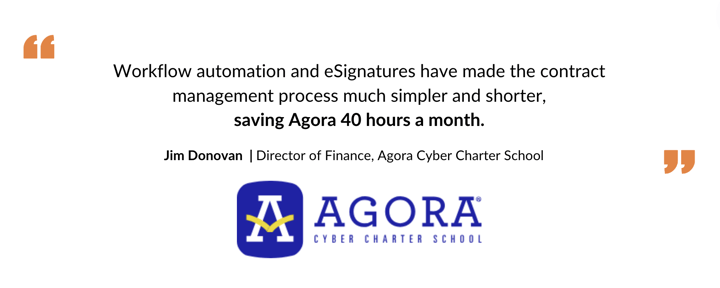How CFOs Drive Success During VCLM Software Implementation
7:27
Rod LinsleyJun 16, 2025 12:38:07 PM
Investing in a Vendor and Contract Lifecycle Management (VCLM) platform is a strategic decision - but the true return for the business is realised only through successful implementation.
While CFOs won’t be configuring workflows or cleansing legacy data, their leadership is critical to ensuring that implementation aligns with financial strategy, delivers measurable value, and avoids common pitfalls that derail enterprise software rollouts.
This guide outlines the CFO’s role in VCLM implementation - what to oversee, where to influence, and how to maintain strategic momentum from initiation through to adoption and optimisation.
CFOs often sponsor VCLM initiatives, and their involvement extends far beyond approving budget.
They ensure that implementation stays aligned with business priorities and that expected outcomes - like cost control, risk mitigation and operational visibility - are delivered.
The CFO’s influence is felt not in tactical delivery, but in securing enterprise alignment, reinforcing accountability, and maintaining focus on value.
CFOs don’t need to manage project plans, but they must ensure the right foundations are in place. This includes:
Support Procurement and Legal teams in setting clear targets linked to enterprise outcomes, such as:
Align with affected departments to prioritise high-impact workflows such as:
Legacy contract data is often messy. Ensure resources are allocated to clean and standardise metadata for migration and push for collaboration with the vendor to do it right.
Assign internal champions and process owners. Decide whether to pursue a guided (internally-led, vendor-assisted) or managed (vendor-led) implementation based on capacity and internal expertise.

Implementing just technology alone won’t transform a business’s vendor and contract management.
Change management must be at the core of an implementation strategy. This requires the CFO to:
Adoption is not a one-time event but an ongoing effort. CFOs can play a key role in fostering a culture of openness, adaptability and engagement, making sure the platform becomes a tool people rely on, not resist.

Once the platform is live, CFOs must track performance against key outcomes based on:
These reflect how well the platform is streamlining day-to-day processes. A decline in manual workload, faster contract turnaround, and higher user adoption provide evidence that the system is delivering functional value. Useful measures include:
Tracking financial outcomes reveals the platform’s contribution to the bottom line. The following indicators help CFOs evaluate whether VCLM is delivering promised savings and preventing value leakage:
These figures showcase how well the platform is supporting governance and risk mitigation. Faster response times and proactive alerts indicate a mature, compliance-friendly VCLM environment using measures like:
These KPIs help demonstrate ROI and guide ongoing optimisation.
Even well-intentioned rollouts can stumble or lose focus. CFOs should watch for these red flags:
Awareness of common missteps helps CFOs steer their organisations toward smoother implementations. By championing integration, supporting change management, and maintaining visibility, they safeguard long-term platform success.
Choosing a VCLM platform is a critical step, but delivering the real value relies on how it’s implemented. CFOs have a unique role to play in aligning the project with financial strategy, ensuring governance and maximising adoption.By leading from the front, facilitating stakeholder engagement and collaboration, measuring the right outcomes, and fostering a culture of continuous improvement, CFOs can ensure their VCLM investment becomes a long-term enabler of vendor and contract visibility, control, compliance and cost efficiency.
Ready to realise the full ROI of VCLM? Schedule a Gatekeeper demo today and discover how our implementation experts help CFOs turn vision into value.

Rod is a seasoned Contracts Management and Procurement professional with a senior IT Management background, specialising in ICT contracts
Sign up today to receive the latest GateKeeper content in your inbox.
.png)
.png)
.png)
-4.png)
Before Gatekeeper, our contracts
Anastasiia Sergeeva, Legal Operations Manager, BlaBlaCar
were everywhere and nowhere.
Gatekeeper is that friendly tap on the shoulder,
Donna Roccoforte, Paralegal, Hakkasan Group
to remind me what needs our attention.
Great System. Vetted over 25 other systems
Randall S. Wood, Associate Corporate Counsel, Cricut
and Gatekeeper rose to the top.
Thank you for requesting your demo.
Next Step - Book a Call
Please book a convenient time for a quick call to discuss your requirements.